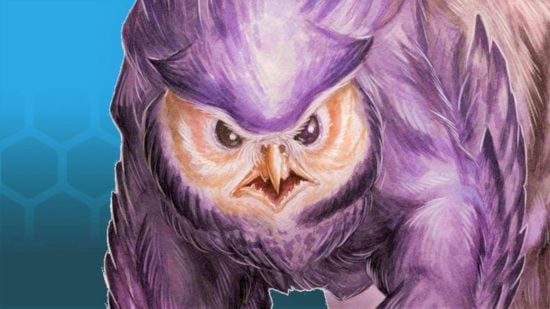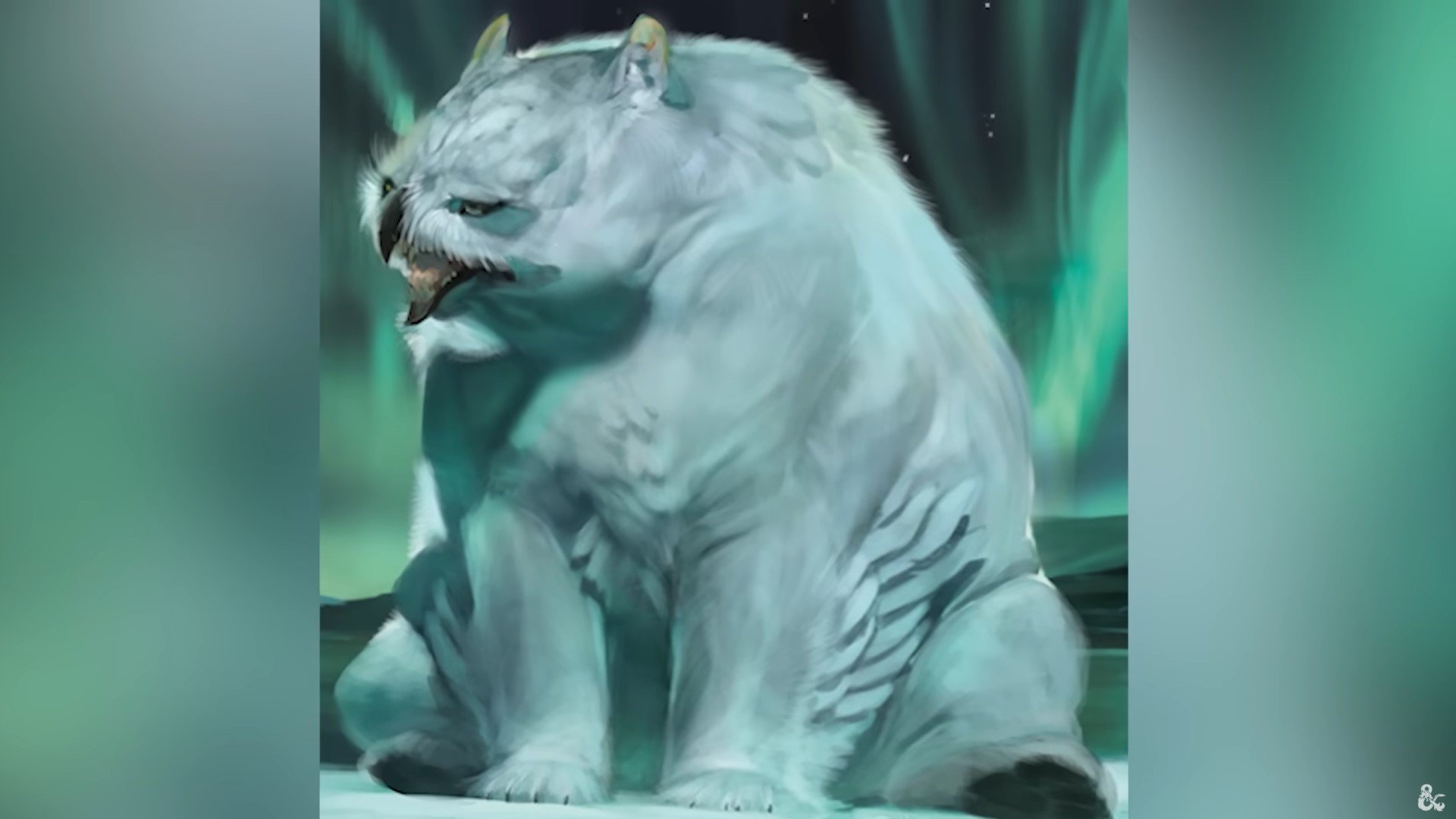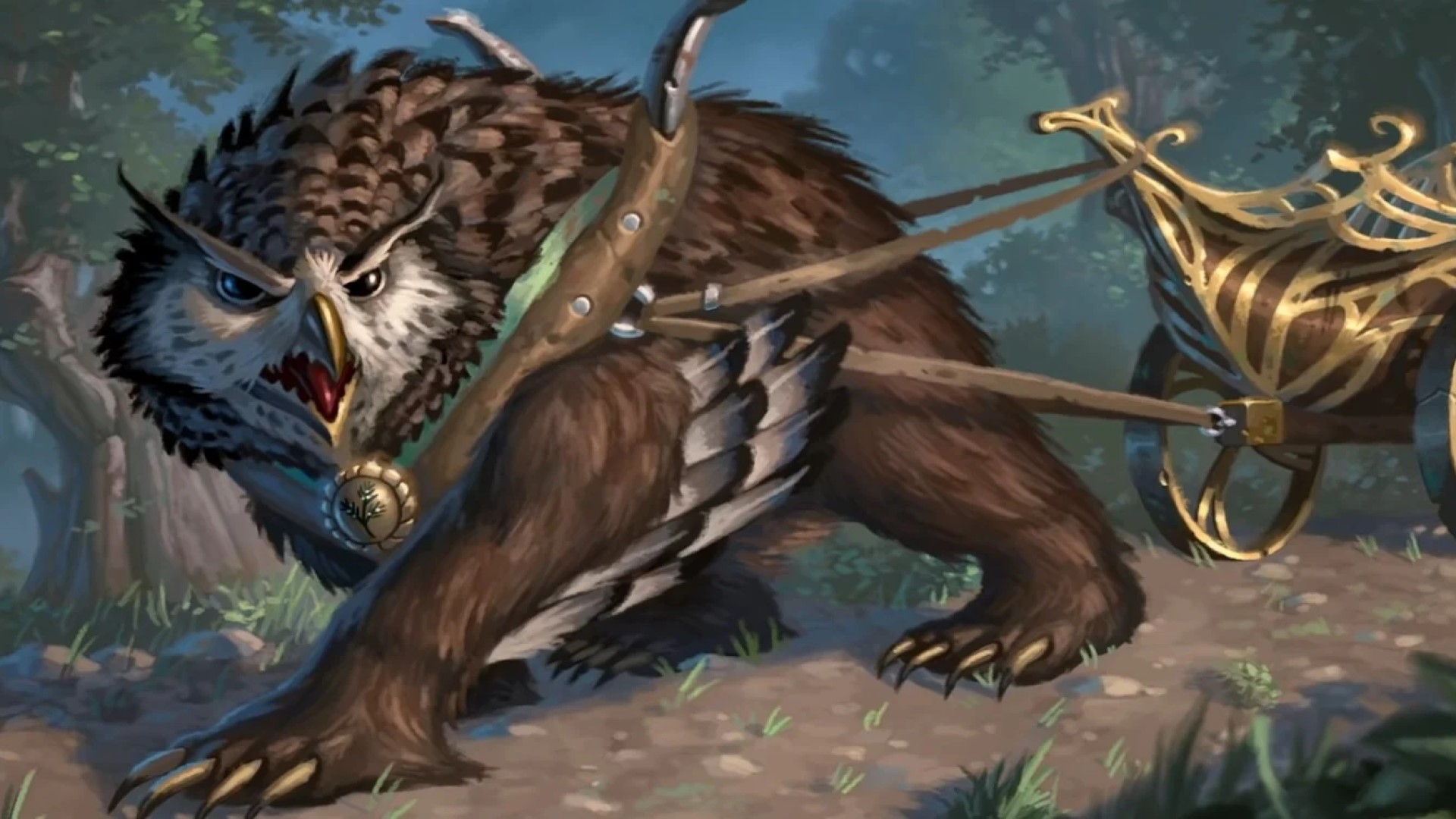The DnD Owlbear is one of the game’s most popular monsters. A truly feared predator in the wild, the Owlbear 5e is perfect for terrorising a low-level TTRPG party. They can become powerful allies, but you’ll need to have plenty of food (and guts) to make this happen. Much like the honey badger in real life, Owlbears know no fear. Make sure they can’t smell yours.
This DnD Owlbear 5e guide packs in everything you need to know about one of the most iconic DnD monsters. But before we jump in, here are a few other TTRPG guides you may find useful. The DnD races and DnD classes are a must-have for players, while Dungeon Masters may be more interested in the best DnD one shots and DnD encounter builders.
And now, back to the Owlbear action:
DnD Owlbear 5e origins
Like an owl, an Owlbear’s piercing shriek emanates through areas, alerting others to the death of its prey. The creature is also gifted with a bear’s shaggy coat and nasty swipe. Owlbears are very territorial and mate for life, building up big families. Woe might await the adventuring party that kills a lone Owlbear, as they sometimes travel in pairs. Distant screeching will indicate that more Owlbears are descending.
Like many monsters, an owlbear makes its lair in a forest, usually inside a cave. This area will reek of decay, with corpses stored in its damp reserves for further feeding later.
The origins of Owlbears remain mysterious. Some believe they were created by a Wizard 5e who merged two animals in an unholy combination. Some nefarious magic users in the Dungeons & Dragons universe have even claimed to have made Owlbears. Meanwhile, others maintain that owlbears come from DnD setting the Feywild, where all manner of strange magic and beasts have existed for thousands of years.
Owlbear 5e stats and combat
Here are the 5e stats for the Owlbear:
| Hit points | 59 (7d10+21) |
| Armour class | 13 |
| Challenge rating | 3 |
| Speed | 40ft |
| Strength | 20 (+5) |
| Dexterity | 12 (+1) |
| Constitution | 17 (+3) |
| Intelligence | 3 (-4) |
| Wisdom | 12 (+1) |
| Charisma | 7 (-2) |
| Proficiency bonus | +2 |
Owlbears have plenty of Strength, but they lack in the Intelligence and Charisma departments. When it comes to Wisdom and Dexterity, they’re pretty average. Owlbears are designed to be a real challenge for a low-level party, but they’re not too overwhelming if encountered on their own. Despite this, played the right way, a pack of Owlbears can prove a formidable threat even to higher-level players.
Owlbears are gifted with Keen Sight and Smell, which means they have advantage on Perception checks that use these senses. Other than this, they don’t possess any particularly extraordinary (or even supernatural) abilities. In a fight, Owlbears are rather brutish in their approach, choosing to pierce foes with their sharp beaks or slash them with a claw attack.
Owlbear 5e variant options
You can also adapt Owlbears in various ways using a DnD homebrew or other DnD books. For example, an undead Owlbear might be a spooky foe with a necrotic twist. Snowy Owlbears have the same DnD stats as a regular Owlbear, but they’re found in other regions, such as in the snowy reaches of D&D 5e setting Icewind Dale. This makes them a popular choice when adding variety to Owlbears in DnD campaigns.
Although it’s not official in 5e, plenty of Dungeon Masters also like to add homebrew grapple mechanics to an Owlbear onslaught. This allows your Owlbears to deliver a deadly ‘hug’, holding an adventurer to their chest before rending with their sharp beaks.
Other DMs like to add berserker-style mechanics too, feeding into the legendary tenacity of the owlbear. In whatever way you choose to run your owlbear, ensure they are vicious, reckless, and screeching like a bird of prey. Unless they’re hunting of course, in which case they’re deadly silent.
Friendly Owlbears as companions, pets, and mounts
In the world of Dungeons & Dragons 5E, Owlbears are very hard to wrangle indeed. However, it is possible. They can be tempted with food over a long period of time, and trained as fierce guardians and mounts. This is a fearful and risky endeavour.
Should your players wish to tame an Owlbear, various homebrew taming techniques exist online. These use time, bonding, skill checks – and, of course, your Owlbear savaging its would-be owner on a failed check. Once an Owlbear has been tamed, it can be used as a trusty Owlbear mount or guardian. But remember, they’re likely to always be aggressive.
Owlbear eggs or an Owlbear cub can also be found in the wild or purchased from magical markets, so you can make it possible to find such items in your D&D campaign. Players may even stumble across an already-trained Owlbear; for example, Wild Beyond the Witchlight features a chariot-drawing Owlbear cub called Juniper.




